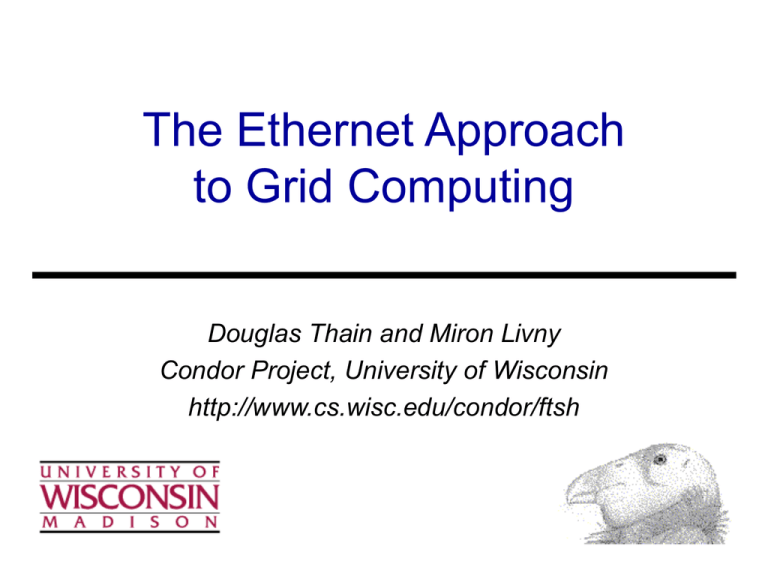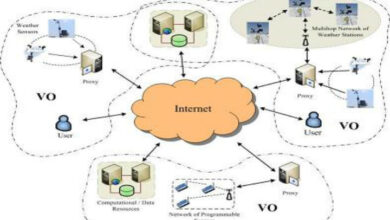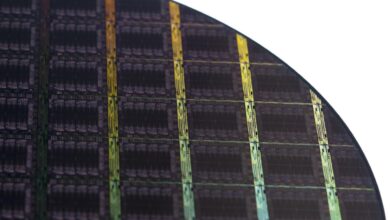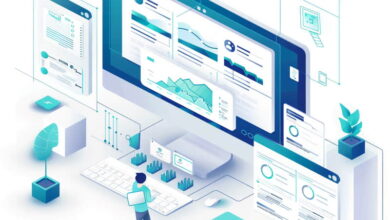Platform Internet Grid Computings Promise
Platform internet the promise of grid computing offers a revolutionary approach to harnessing the power of distributed systems. Imagine a network of interconnected computers, working in concert to solve complex problems, enhance resource sharing, and propel the performance of internet services to new heights. This interconnected approach promises to redefine how we utilize and experience the internet.
This exploration delves into the fundamental concepts of grid computing, its potential benefits, and the crucial infrastructure required to support its implementation on the internet platform. We’ll also examine the challenges and security considerations inherent in this powerful paradigm shift. The potential for scientific advancement, large-scale data processing, and even cloud computing innovation is significant.
Introduction to Grid Computing on the Internet Platform
Grid computing leverages the power of numerous interconnected computers to solve complex problems that are beyond the capacity of a single machine. This distributed approach, crucial in the modern internet era, allows for the sharing of resources and tasks across a network, fostering collaboration and efficiency. It’s a powerful tool for handling large datasets, executing intensive calculations, and supporting scientific research and data analysis.
Definition of Grid Computing
Grid computing is a type of distributed computing that coordinates and manages a collection of geographically dispersed computers to function as a single, unified computing resource. It enables the pooling of computing resources, such as processing power, storage, and network bandwidth, to address tasks that would be intractable for a single machine. This approach contrasts with traditional computing models by distributing workloads across a network.
Fundamental Concepts of Distributed Computing
Distributed computing relies on the concept of dividing a large task into smaller subtasks that can be executed concurrently on different computers. This approach enhances computational speed and efficiency by parallelizing operations. The internet platform facilitates this by providing a common communication channel for the dispersed computers, allowing them to collaborate and share resources seamlessly. This communication infrastructure, a crucial element of distributed computing, is vital for effective grid computing on the internet.
Architecture and Components of a Grid Computing System
A typical grid computing system comprises several key components:
- Resource Managers: These components are responsible for identifying, managing, and allocating computing resources, such as processors, memory, and storage, within the grid. They act as central hubs for resource allocation, ensuring efficient use and avoiding conflicts.
- Resource Brokers: These mediators play a crucial role in matching user requests for computational resources with available resources within the grid. They optimize resource allocation by considering factors like workload, performance, and location.
- Job Schedulers: These components manage the allocation and execution of user tasks or jobs across the grid. They prioritize jobs based on factors like urgency and resource availability, ensuring that tasks are processed efficiently.
- Communication Infrastructure: A robust communication infrastructure is essential for the seamless exchange of data and control information among different nodes in the grid. High-speed networks and appropriate protocols are key elements in this component.
Types of Grid Computing Platforms
Various grid computing platforms cater to different needs and applications. The selection of a platform depends on the specific requirements of the project.
- High-Performance Computing (HPC) Grids: These grids are specifically designed for computationally intensive tasks, often found in scientific research, engineering simulations, and financial modeling. They focus on maximizing the computational power of the grid for demanding tasks.
- Data Grids: Data grids are specifically designed to manage and process large datasets. They prioritize data access and sharing across the grid, crucial for applications involving massive amounts of data, such as genomics research and scientific simulations.
- Collaborative Grids: These platforms support collaboration and resource sharing among different organizations and users. This collaborative aspect is essential for projects requiring the involvement of multiple parties, like large-scale scientific research endeavors.
Key Differences Between Grid Computing Platforms
| Platform Type | Focus | Primary Use Cases | Example |
|---|---|---|---|
| High-Performance Computing (HPC) Grids | Maximizing computational power | Scientific simulations, engineering analysis, financial modeling | IBM’s Blue Gene/Q |
| Data Grids | Managing and processing large datasets | Genomics research, scientific simulations, data warehousing | Globus Toolkit |
| Collaborative Grids | Facilitating collaboration and resource sharing | Large-scale scientific projects, distributed data analysis | Open Science Grid |
The Promise of Grid Computing on the Internet
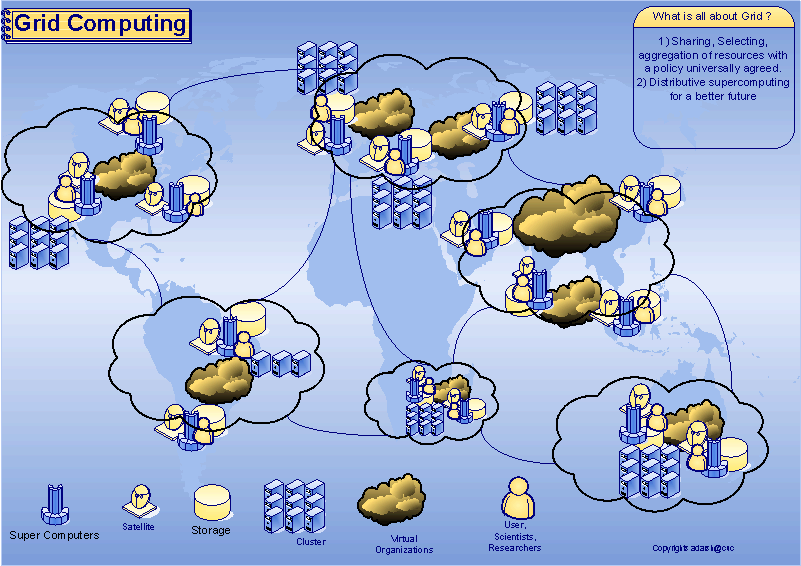
The internet, a vast network of interconnected computers, is constantly evolving. One of the key challenges is maintaining speed, reliability, and scalability to meet the growing demands of users and applications. Grid computing, with its potential to harness distributed resources, presents a compelling solution to these challenges. This approach promises to unlock significant improvements in internet performance and resource utilization.Grid computing fundamentally reimagines how we approach computing tasks.
Instead of relying on a single, powerful machine, grid computing leverages a network of computers working collaboratively. This allows for the execution of complex computations and data processing tasks at a scale far beyond the capabilities of a single system. This collaborative power, when applied to the internet platform, could revolutionize how we access and utilize online resources.
Potential Benefits of Integrating Grid Computing
Grid computing offers numerous advantages when integrated into the internet platform. These benefits span from enhanced resource sharing to improved service performance and scalability. The key to realizing these advantages lies in the efficient management and coordination of distributed resources.
Enhanced Resource Sharing and Utilization
Grid computing allows for the pooling and sharing of computing resources across a network of computers. This shared resource pool can be utilized to perform computationally intensive tasks more efficiently. Imagine a scenario where a large-scale scientific simulation requires processing power far exceeding that of a single server. Grid computing enables multiple servers to work together, distributing the computational load and reducing processing time dramatically.
This shared utilization dramatically improves efficiency and reduces costs associated with infrastructure.
Improved Performance and Scalability of Internet Services
By distributing computational tasks across a network, grid computing can significantly improve the performance of internet services. This is particularly beneficial for tasks like data analysis, image processing, and scientific simulations. The distributed nature of grid computing allows services to scale effortlessly as demand increases. Imagine a surge in traffic to a popular online service; grid computing allows the service to dynamically allocate resources across a network of servers, maintaining responsiveness and preventing service degradation.
Challenges and Limitations of Implementing Grid Computing on the Internet
While the potential benefits of grid computing are substantial, several challenges and limitations exist. One key challenge is the complexity of managing and coordinating the distributed resources. Ensuring seamless communication and data synchronization across a network of heterogeneous computers is crucial. Another challenge lies in security. Protecting sensitive data and ensuring the integrity of distributed computations within a shared environment are paramount.
Finally, the initial setup and maintenance costs of a grid computing infrastructure can be substantial, posing a barrier to adoption for some organizations.
The internet platform, promising a future of grid computing, faces significant hurdles. While the concept offers massive potential, current network security warnings ring out loud, casting a shadow over the dream of seamless distributed computing. Network security warnings ring out highlight the critical need for robust security measures to protect these vast interconnected systems. Ultimately, addressing these security concerns is crucial for realizing the full promise of grid computing on the internet platform.
Advantages and Disadvantages of Grid Computing on the Internet
| Advantages | Disadvantages |
|---|---|
| Enhanced resource utilization | Complexity of management and coordination |
| Improved performance and scalability | Security concerns |
| Cost-effectiveness (potentially) | High initial setup and maintenance costs |
| Increased processing power | Heterogeneity of resources |
| Support for large-scale computations | Network dependencies |
Internet Platform Infrastructure for Grid Computing
The internet, with its vast network of interconnected devices and resources, presents a unique opportunity for grid computing. Leveraging this infrastructure allows for the pooling and sharing of computational power, storage, and data across geographically dispersed locations. This facilitates complex tasks that would be impractical or impossible for a single machine to handle. This approach significantly improves efficiency and cost-effectiveness in various applications.The key lies in establishing a robust and reliable infrastructure that seamlessly integrates diverse computing resources into a cohesive grid.
This infrastructure needs to address crucial aspects like communication protocols, data management, security, and resource allocation to ensure effective grid computing.
Network Protocols in Grid Computing
Network protocols are fundamental to grid computing on the internet. They dictate how resources communicate and share data across the network. Protocols like TCP/IP, UDP, and specialized protocols designed for high-performance communication are crucial. These protocols enable efficient data transmission and resource discovery. The ability to communicate and share data between different components of the grid is a fundamental requirement for effective grid computing.
Without efficient protocols, the grid’s resources cannot coordinate effectively.
Data Management and Storage Systems
Effective data management and storage are vital for grid computing. This involves establishing centralized or decentralized repositories for data, ensuring data consistency and accessibility across the grid. A critical aspect is the ability to manage and track data versions, enabling collaboration and preventing data loss. The scalability and reliability of data storage systems are critical to ensure data availability and integrity during computations.
Appropriate data management systems are critical for ensuring the integrity, accessibility, and reliability of data.
Security Considerations for Grid Computing
Security is paramount in grid computing. Protecting data and resources from unauthorized access, modification, or disruption is essential. Implementing robust authentication and authorization mechanisms is crucial. Data encryption and secure communication channels are necessary to prevent breaches. Grid computing often involves sharing sensitive data and resources, making security a significant concern.
The internet, promising a grid computing future, has always hinted at vast potential. But the real-world application of this power is now becoming clearer with the rise of neural network technology, which is rapidly moving into the mainstream. This shift allows for complex computations to be distributed across numerous interconnected devices, much like the ideal grid computing model, bringing us closer to harnessing the full potential of the internet’s interconnected power.
neural network technology moves into the mainstream. Ultimately, the promise of grid computing, made possible by these advancements, is becoming a tangible reality.
Comprehensive security measures are required to safeguard against potential threats.
Resource Allocation and Scheduling in Grid Computing
Resource allocation and scheduling in grid computing involve distributing tasks across available resources in an optimal way. Efficient scheduling algorithms are essential to minimize execution time and maximize resource utilization. Policies need to be in place to manage priorities, resource availability, and task dependencies. Resource management systems, incorporating scheduling algorithms, determine how tasks are distributed among available resources.
Network Protocols Suitable for Grid Computing, Platform internet the promise of grid computing
| Protocol | Description | Suitability for Grid Computing |
|---|---|---|
| TCP/IP | Transmission Control Protocol/Internet Protocol; a suite of protocols for internet communication. | Excellent for reliable, ordered data transfer, but can be slower than UDP for some applications. |
| UDP | User Datagram Protocol; a connectionless protocol that prioritizes speed over reliability. | Suitable for applications where speed is critical, such as streaming data or video conferencing. |
| HTTP | Hypertext Transfer Protocol; used for data transfer on the web. | Useful for transferring data and accessing resources over the web. |
| SSH | Secure Shell; used for secure remote login and command execution. | Essential for secure access to and control of grid resources. |
| MPI | Message Passing Interface; a standard for message passing between processes. | Useful for parallel computing tasks within a grid environment. |
Applications and Use Cases of Grid Computing on the Internet
Grid computing, leveraging the power of distributed resources across the internet, has opened up exciting possibilities for various applications. Its ability to pool computational power and data storage from multiple sources offers significant advantages over traditional approaches, particularly in tackling complex problems that demand more resources than a single machine can provide. This approach to problem-solving is revolutionizing fields from scientific research to web services, significantly impacting how we access and process information online.The internet’s inherent distributed nature aligns perfectly with grid computing’s architecture.
By connecting geographically dispersed computers, grid computing creates a virtual supercomputer, enabling the processing of massive datasets and complex simulations that were previously unimaginable. This interconnected system offers a robust and scalable platform for a wide range of applications, making it a cornerstone of modern technological advancements.
Web Services Applications
Grid computing enhances web services by distributing workloads across a network of servers. This distributed approach significantly improves the responsiveness and scalability of web applications. For example, imagine a massive e-commerce platform handling millions of transactions per day. Grid computing can be used to distribute the workload of processing orders, handling payments, and updating inventory across a network of servers, ensuring the platform remains operational and responsive even under peak demand.
This distributed architecture prevents overloading individual servers, which is crucial for maintaining service availability and preventing downtime. Another example is content delivery networks (CDNs). By distributing copies of frequently accessed content across various servers, grid computing ensures rapid delivery to users, enhancing user experience and reducing latency.
Scientific Research and Data Analysis
Grid computing is a vital tool for tackling complex scientific problems. By pooling computational resources, researchers can perform simulations and analyses that would be impossible with a single machine. For instance, in climate modeling, researchers can use grid computing to run sophisticated climate simulations using enormous datasets, providing more accurate predictions and understanding of climate patterns. In protein folding simulations, grid computing enables researchers to analyze complex protein structures and their interactions, accelerating drug discovery and development.
Furthermore, the analysis of large astronomical datasets, such as those collected by the Large Synoptic Survey Telescope (LSST), requires the distributed processing power offered by grid computing to uncover patterns and insights within these enormous datasets.
Large-Scale Data Processing
Grid computing is an ideal solution for processing vast amounts of data. Consider the sheer volume of data generated by social media platforms or search engines. Processing and analyzing these datasets requires considerable computational power and storage capacity, which grid computing can provide. By distributing the data across multiple servers and processing it in parallel, grid computing accelerates the analysis process.
This ability is particularly valuable in sectors like finance, where real-time data processing and analysis are essential for decision-making.
The internet platform holds a compelling promise for grid computing, envisioning a future where vast resources are pooled together for powerful tasks. However, the rapid spread of malware, like the notorious spreading Sobig F variant, fastest outbreak ever , highlights the critical need for robust security measures alongside the potential benefits of this distributed computing model. Ultimately, realizing the promise of grid computing requires careful consideration of both its potential and the associated risks.
Cloud Computing Services
Grid computing forms a crucial foundation for cloud computing services. Cloud providers use grid computing techniques to distribute the workload of managing virtual machines, storage, and applications across numerous servers. This distributed architecture enables cloud providers to scale their resources dynamically to meet fluctuating demands, ensuring high availability and responsiveness. The increased scalability offered by grid computing ensures that cloud services can accommodate the demands of a growing number of users and applications without compromising performance.
Challenges and Considerations for Grid Computing on the Internet
Grid computing, while promising immense potential, faces several hurdles when deployed on the internet. The distributed nature of grid systems, relying on various interconnected nodes, introduces complexities in security, data management, and resource coordination. Successfully leveraging grid computing necessitates addressing these challenges head-on to ensure reliable and efficient operation.
Security Risks and Vulnerabilities
Grid computing inherently exposes a larger attack surface compared to traditional centralized systems. Malicious actors can target individual nodes, compromising data integrity or disrupting the entire network. Compromised nodes can be used as launchpads for further attacks, potentially affecting other components within the grid. Furthermore, the authentication and authorization mechanisms must be robust to prevent unauthorized access and modification of resources.
The sheer number of interconnected components in a grid environment increases the likelihood of vulnerabilities and the potential for cascading failures.
Data Integrity and Consistency
Maintaining data integrity and consistency across distributed resources in a grid environment presents significant challenges. Different nodes might employ varying storage mechanisms and protocols, leading to inconsistencies in data formats or replication. Synchronization mechanisms need to be robust to ensure data accuracy and prevent data corruption. The need for data validation and error handling becomes paramount to maintaining the integrity of the entire system.
Fault Tolerance and Recovery Mechanisms
Grid computing systems must be resilient to failures. Individual nodes or connections can experience downtime, impacting the overall system performance. Robust fault tolerance mechanisms are essential to ensure continued operation even when some components fail. This necessitates redundant resources and intelligent strategies for task reassignment and recovery. The system should be able to automatically identify and isolate faulty components, minimizing disruption to other parts of the grid.
Communication and Coordination
Efficient communication and coordination among distributed components are critical for effective grid computing. Varied network conditions and different communication protocols between nodes can significantly impact performance. The system needs a mechanism for identifying optimal communication paths and handling potential delays. Standardized communication protocols and efficient resource allocation algorithms are vital for optimal performance.
Security Risks, Vulnerabilities, and Mitigation Strategies
| Security Risk/Vulnerability | Description | Mitigation Strategy |
|---|---|---|
| Unauthorized Access | Malicious actors gaining access to resources without authorization. | Strong authentication mechanisms (e.g., multi-factor authentication), access controls, and intrusion detection systems. |
| Data Breaches | Compromised nodes leading to unauthorized access and modification of data. | Data encryption, secure storage solutions, and regular security audits. |
| Denial-of-Service Attacks | Overloading the system with requests, disrupting its functionality. | Traffic filtering, load balancing, and distributed denial-of-service (DDoS) protection. |
| Malware Infections | Malicious software infecting grid nodes. | Regular security updates, antivirus software on each node, and proactive monitoring. |
| Compromised Node Exploitation | Attackers using compromised nodes to attack other nodes or the entire system. | Secure isolation of nodes, rapid detection of compromised nodes, and robust isolation protocols. |
Future Trends and Directions in Grid Computing on the Internet: Platform Internet The Promise Of Grid Computing
The internet’s evolution has driven a surge in data volume and computational needs. Grid computing, by its nature, is well-positioned to handle these demands. However, the field is not static; it’s constantly adapting to emerging technologies and evolving user requirements. This exploration dives into the future trajectory of grid computing, examining its integration with other technologies and potential to transform internet-based services.Grid computing’s future is intertwined with the rise of cloud computing and big data analytics.
These technologies provide the necessary infrastructure and analytical tools to unlock the true potential of grid computing. The combination allows for scalable resource allocation and advanced data processing capabilities, opening doors to a range of novel applications.
Emerging Trends in Grid Computing
Cloud computing and big data analytics are rapidly reshaping the landscape of grid computing. Cloud platforms offer readily available, scalable computing resources that can be dynamically allocated to grid tasks. This elasticity allows for optimized resource utilization and enhanced responsiveness. Big data analytics techniques are crucial for extracting meaningful insights from the vast datasets processed within grid environments.
Integration with Other Technologies
Grid computing’s adaptability is evident in its integration with various technologies. For example, machine learning algorithms can be deployed on grid infrastructures to train models on massive datasets. This integration enhances the efficiency and accuracy of grid-based applications. Similarly, the combination of grid computing and artificial intelligence can lead to more sophisticated and intelligent data analysis and processing.
Revolutionizing Internet-Based Services
Grid computing’s potential to revolutionize internet-based services is immense. Imagine personalized learning platforms leveraging grid resources to deliver tailored educational content to each student. Or, consider how grid computing could support real-time data analysis for personalized healthcare recommendations. These are just a few examples of how grid computing can be integrated into existing and emerging internet-based services, offering a higher level of performance and user experience.
Comparison of Current and Future Grid Computing Models
Current grid computing models often focus on specific, pre-defined tasks. Future directions, however, are likely to emphasize dynamic adaptation and self-configuration. This means that the grid will be able to automatically adjust its resources based on the changing demands of the tasks, improving efficiency and scalability. This contrasts with the more rigid approach of current models, enabling more agile and responsive grid environments.
Emerging Technologies Impacting Grid Computing
Several emerging technologies are poised to significantly impact the future of grid computing.
- Artificial Intelligence (AI): AI’s ability to automate tasks and optimize resource allocation will be crucial for managing the complexity of grid environments. AI-powered algorithms can analyze data patterns to identify optimal resource configurations for different tasks, potentially improving efficiency and responsiveness.
- Internet of Things (IoT): The proliferation of IoT devices generates vast amounts of data, which grid computing can process and analyze. This data can be used to identify patterns and trends, leading to improved decision-making and optimized resource management in various sectors.
- Blockchain Technology: Blockchain’s inherent security and transparency can enhance the trust and reliability of grid computing systems. Secure and verifiable data sharing within a grid environment will be critical for future applications.
Final Summary
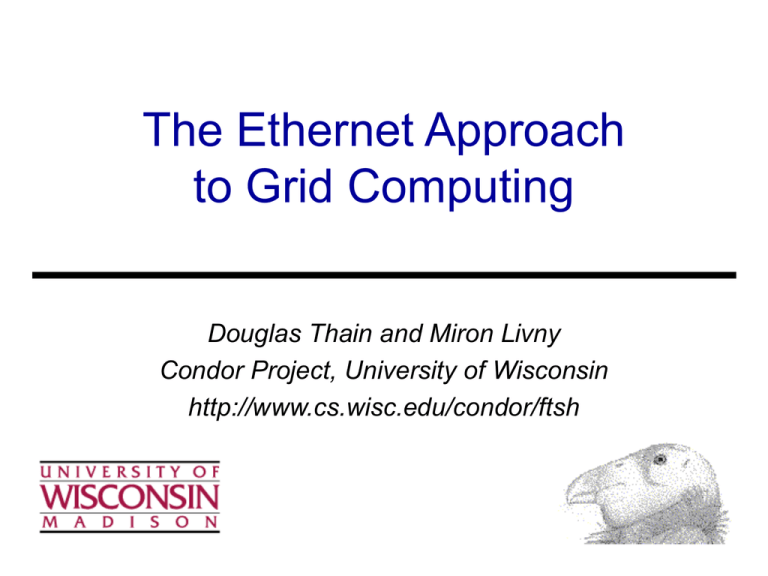
In conclusion, platform internet the promise of grid computing presents a compelling vision for the future of internet-based services. While challenges remain, the potential for enhanced performance, scalability, and resource utilization is substantial. From scientific research to everyday web services, grid computing could fundamentally alter how we interact with and leverage the internet’s capabilities. Further research and development are crucial to realizing this potential, paving the way for a more efficient, powerful, and interconnected digital future.

